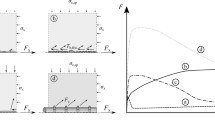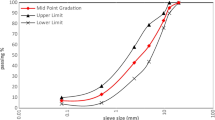Abstract
The aim of this study was to modeling beech (Fagus orientalis) particleboard properties based on UF resin content and board density. Board density at three levels (520, 620 and 720 kg/m3) and resin content (6, 7 and 8 %) were compared. Stepwise multivariate-linear regression models were used to evaluate the influence of the above parameters on board properties and to determine the most effective factor. Regression equations indicated that both parameters were included in the models of shear strength, and thickness swelling after 24 h immersion based on the degree of importance. The model of modulus of rupture only had one step and board density positively affected it. Board density and resin content had not significant effect on modulus of elasticity. The results obtained from contour plots revealed that manufacturing beech particleboards with density ranging from 570 to 620 kg/m3 and 6 % resin would result in boards with properties within those required by corresponding standards.




Similar content being viewed by others
References
ANSI (2009) Particleboard. American national standard. ANSI A208.1-2009. National Composite Association, Lesburg, VA
Arabi M, Faezipour M, Layeghi M, Enayati AA (2011) Interaction analysis between slenderness ratio and resin content on mechanical properties of particleboard. J For Res 22(3):461–464
Ashori A, Nourbakhsh A (2008) Effect of press cycle and particleboard made from the underutilized low-quality raw materials. Ind Crop Prod 28(2):225–230
ASTM 1037 (1996) Standard method for the preparation of extractive free wood. Designation D1105-84. Annual book of ASTM standards, Vol 04-01 wood
Baharoğlu M, Nemli G, Sarı B, Bardak S, Ayrılmıs N (2012) The influence of moisture content of raw material on the physical and mechanical properties, surface roughness, wettability, and formaldehyde emission of particleboard composite. Compos Part B 42(3):2448–2451
Bowyer JL, Shmulsky R, Haygreen JG (2007) Forest products and wood science: an introduction. Wiley, London
Cook DF, Chiu CC (1997) Predicting the internal bond strength of particleboard utilizing a radial basis function neural network. Eng Appl Artif Intell 10(2):171–177
Dias FM, Nascimento MF, Martinez-Espinos M, Lah FAR, Domenico Valarelli IDD (2005) Relation between the compaction rate and physical and mechanical properties of particleboard. J. Mater Res 8(3):329–333
Doosthoseini K (2008) Wood composite materials, manufacturing, applications. Tehran University Press, Iran, 1:647. (in Persian)
EN 310 (1993) Wood based panel. Department of modulus of elasticity in bending and bending strength. European Committee for Standardization, Brussels
EN 312 (2003) Particleboards-specifications. European Committee for Standardization, Brussels
EN 317 (1993) Particleboard and fiberboards. Determination of swelling in thickness after immersion in water. European Committee for Standardization, Brussels
EN 323 (1999) Wood based panels. Determination of the density. European Committee for Standardization, Brussels
EN 326 (1993) Wood based panels. Sampling, cutting and inspection. Sampling and cutting of test pieces and expression of test results. European Committee for Standardization, Brussels
Enayati A, Eslah F, Farhid E (2013) Evaluation of particleboard properties using multivariate regression equations based on structural factors. J Agr Sci Technol 15:1405–1413
Eslah F, Enayaty AA, Tajvidi M, Faezipour MM (2012) Regression models for the prediction of poplar particleboard properties based on urea formaldehyde resin content and board density. J Agr Sci Technol 14(6):1321–1329
Garcia Fernandez F, García Esteban L, De Palacios P, Navarro M, Conde M (2008) Prediction of standard particleboard mechanical properties utilizing an artificial neural network and subsequent comparison with a multivariate regression model. For Syst 17(2):178–187
Hayashi K, Ohmi M, Tominaga H, Fukada K (2003) Effect of board density on bending properties and dimensional stabilities of MDF-reinforced corrugated particleboard. J Wood Sci Technol 49:398–404
Hesch R (1993) Correlations among density, resin content and quality criteria in homogeneous boards of bagasse. Euro J Wood Wood Prod 51(5):312–318
Hiziroglu S, Jarusombuti S, Fuengvivat V (2004) Surface characteristics of wood composites manufactured in Thailand. Build Environ 39(11):1359–1364
Kalaycioglu H, Deniz I, Hiziroglu S (2005) Some of the properties of particleboard from paulownia. Wood Sci Technol 51(4):410–414
Kalogirou S, Eftekhari M, Marjanovic L (2003) Predicting the pressure coefficients in a naturally ventilated test room using artificial neural network. J. Build and Environ 38:399–407
Kim S (2009) Environment-friendly adhesives for surface bonding of wood-based flooring using natural tannin to reduce formaldehyde and TVOC emission. J Bio-Resour Technol 100:744–748
Malinov S, Sha W, Meckeown JJ (2001) Modeling the correlation between processing parameters and properties in titanium alloys using artificial neural network. J Comput Mater Sci 21:375–394
Maloney TM (1977) Modern particleboard and dry-process fiberboard manufacturing. Calif (USA), Miller Freeman Pub, San Francisco, p 672
Maloney TM (1993) Modern particleboard and dry-process fiberboard manufacturing. Miller Freeman Publications, California
Nemli G, Ozturk I, Aydin I (2005) Some of the parameters influencing surface roughness of particleboard. Build Environ 40(10):1337–1340
Wang SY, Chen TY, Fann JD (1999) Comparison of internal bond strength and compression shear strength of wood-based materials. J Wood Sci 45:396–401
Zhou D (1990) A study of oriented strand board made from hybrid poplar. Holz als Roh-und Werkstoff 48:293–296
Author information
Authors and Affiliations
Corresponding author
Rights and permissions
About this article
Cite this article
Enayati, A.A., Eslah, F. Modeling beech (Fagus orientalis) particleboard properties based on resin content and board density. J Indian Acad Wood Sci 11, 45–49 (2014). https://doi.org/10.1007/s13196-014-0116-0
Received:
Accepted:
Published:
Issue Date:
DOI: https://doi.org/10.1007/s13196-014-0116-0




